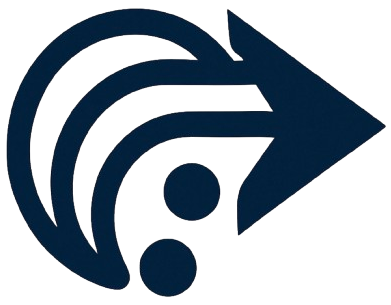In the fast-moving world of digital advertising, one channel continues to quietly deliver results at scale: pop advertising. Often misunderstood or overlooked, pop ads offer performance marketers a unique blend of affordability, reach, and raw traffic volume that few other formats can match. For those looking to buy pop ads that deliver serious scale without the premium price tag, this channel remains a powerful — and often underused — option.
In this guide, we’ll explore what pop advertising is, how it works, why it’s still highly effective, and how to leverage it properly to generate cost-efficient, high-volume results — especially for affiliate campaigns, lead generation, and mobile offers.
What Is Pop Advertising?

Pop advertising refers to online ad formats that open a new browser window or tab either on top of (pop-up) or underneath (pop-under) the user’s current session. These formats instantly display a landing page, bypassing traditional ad placements entirely.
Unlike display ads or native units, pop ads don’t rely on banners, images, or headlines to attract clicks. Instead, the ad itself is the destination — meaning every impression is also a visit to your landing page.
Pop ads are commonly used in performance-driven campaigns that prioritize volume, conversions, and testing velocity.
Why Pop Ads Still Work in 2025
While some marketers have dismissed pop traffic as outdated or low quality, the reality is more nuanced. In the hands of skilled media buyers, pop ads remain one of the most scalable, affordable, and predictable forms of paid traffic available.
Here’s why:
- Bypass Banner Fatigue: Pop ads don’t compete for visual attention. They load the landing page directly, making them immune to banner blindness.
- High Intent Opportunities: When matched with the right offer, pop traffic captures users at critical moments — especially on mobile.
- Huge Global Inventory: With billions of daily impressions available across tier 1, 2, and 3 GEOs, pop advertising offers near-unlimited scale.
- Cost-Efficiency: CPMs are far lower than native, display, or search. This means marketers can test and optimize aggressively without blowing their budget.
For verticals that depend on volume — like sweepstakes, dating, mobile content, and utilities — pop ads can still drive exceptional ROI.
Key Benefits of Pop Advertising
Whether you’re an affiliate, direct advertiser, or agency buyer, pop ads offer several strategic advantages:
1. Unmatched Traffic Volume
Pop ad networks serve billions of impressions per day, across mobile and desktop. If your offer needs scale — fast — pop traffic is one of the most accessible ways to get there.
2. Fast Testing Cycles
With low CPMs and high impression counts, you can run A/B tests at speed. Marketers often test entire funnel structures for a few hundred dollars — something not possible with channels like Facebook or Google Ads.
3. Deep Targeting Options
Contrary to the myth that pop traffic is untargeted, modern platforms offer segmentation by:
- GEO/country
- Device type (mobile/desktop)
- Operating system
- Browser
- Connection type (Wi-Fi vs carrier)
- Frequency capping
- Dayparting and scheduling
This allows for tight control over who sees your ads — and when.
4. Consistent, Predictable Costs
Pop traffic doesn’t fluctuate wildly with algorithm changes or ad auction volatility. You can often set fixed CPMs or use smart bidding systems for cost stability, which is a huge plus for long-term campaign planning.
Use Cases Where Pop Ads Shine
Pop advertising isn’t right for every brand — but in the right scenarios, it can outperform more expensive channels.
Common high-performing use cases include:
- Affiliate marketing (CPA, CPL, CPI)
- Lead generation funnels
- Mobile app installs
- Dating & adult verticals
- Sweepstakes & giveaways
- Utility software promotions
- Carrier billing and mobile subscriptions
Marketers in these verticals report low CPAs and rapid scale — especially when paired with optimized landing pages and fast-loading offers.
How to Succeed with Pop Traffic
Pop advertising rewards marketers who know how to test, track, and optimize. To get the most from your campaigns, follow these best practices:
✅ Use a Tracker
Always route pop traffic through a proper tracking platform (like Voluum, Binom, or RedTrack). This allows you to identify converting placements, block poor performers, and scale profitably.
✅ Optimize Landing Pages for Speed
Pop visitors often bounce quickly. Your landing page must load fast — ideally under 2 seconds — and have a clear, frictionless call to action.
✅ Match the Offer to the Audience
Not all offers are pop-friendly. Avoid high-consideration products or complex funnels. Instead, focus on low-barrier conversions like single opt-ins, app installs, or simple lead forms.
✅ Filter and Refine
Use frequency caps and blacklist underperforming sources. Many networks offer tools to block unprofitable publishers or IPs, so you can fine-tune your traffic over time.
Choosing the Right Pop Ad Network
Not all pop traffic is created equal. When selecting a pop ad provider, look for:
- Reputation and transparency
- Real-time reporting and optimization tools
- Fraud protection / bot filtering
- Responsive support and account management
Some of the leading platforms in 2025 include Zeropark, ExoClick, PropellerAds, and Clickadu — though newer networks are emerging with fresh inventory and better pricing models.
Final Thoughts
Pop advertising is not a magic bullet — but it remains one of the most underrated tools in a digital marketer’s arsenal.
For advertisers focused on speed, scale, and ROI, pop ads offer a cost-effective way to flood funnels with traffic and find winners fast. When paired with smart targeting and strong offers, the results can be surprisingly powerful.
So if you’re tired of chasing expensive clicks and slow-testing channels, it might be time to give pop advertising another look — because in the right hands, it still delivers volume that converts.

